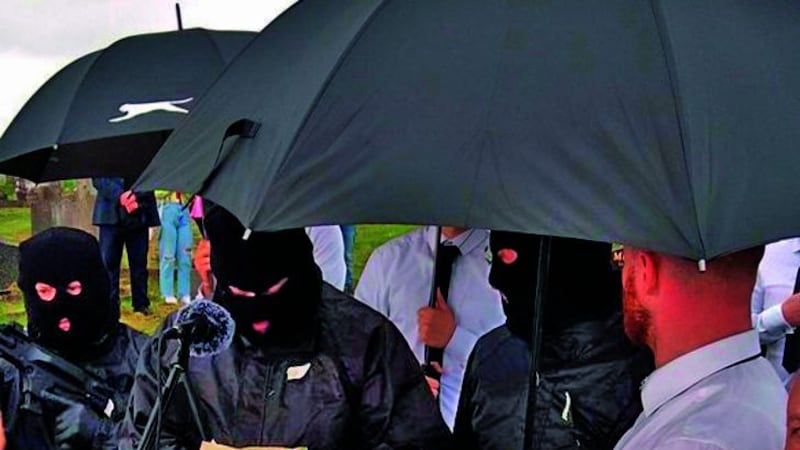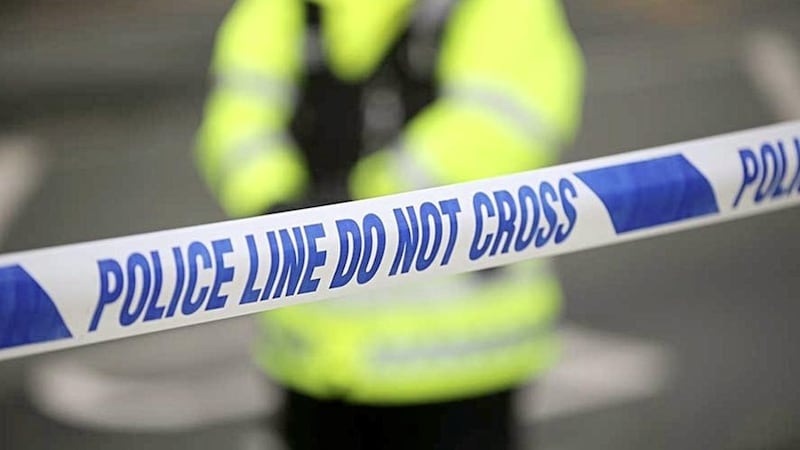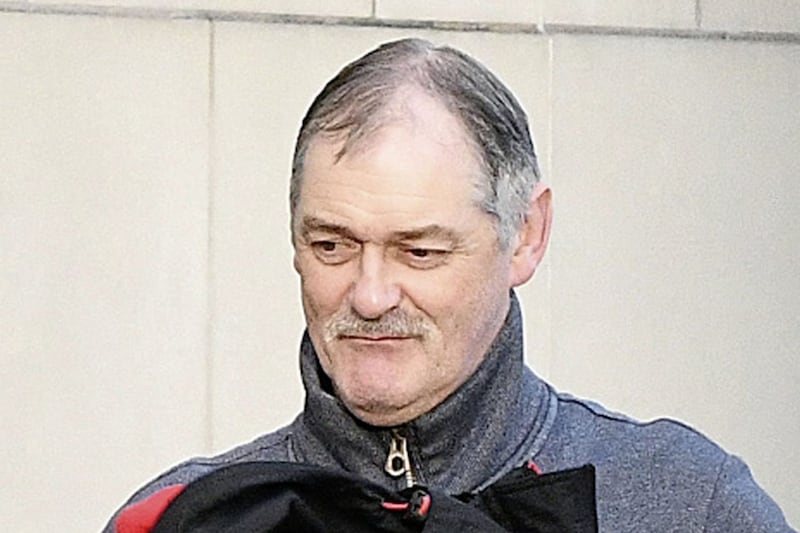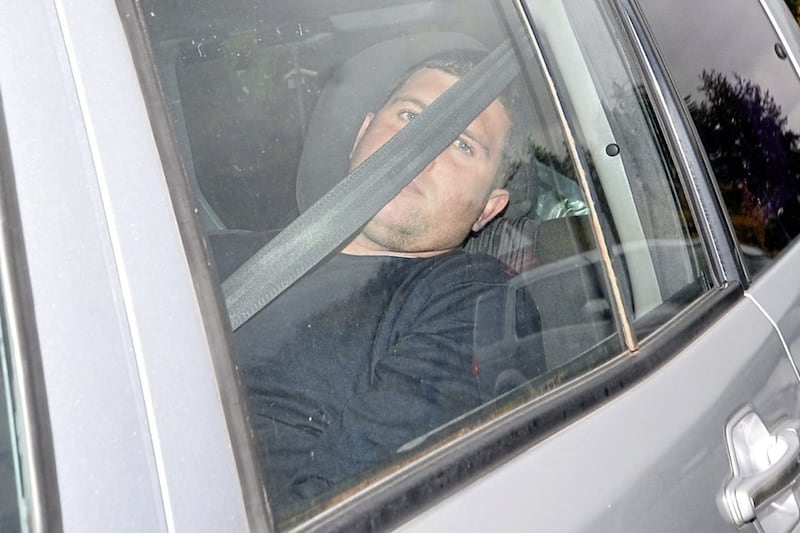HOMEMADE guns - similar to those recently put on show by Óglaigh na hÉireann (ONH) - can be produced using a 3D printer costing as little as £160.
The recent display of such weaponry during an ONH show of strength in Belfast last month came as a surprise to many observers.
While there was initial speculation that the weapons may be have been manufactured using a 3D printer and computer software, a leading weapons experts says he believes this to be the case.
Arms and intelligence specialist Nic Jenzen-Jones said that while impossible to tell from a photograph it is "probable" that the paramilitary group manufactured the hybrid semi-automatic weapons on show.
He has also confirmed the homemade weapons on display were FGC-22s, and included a commercially available magazines.
The growth in 3D gun making has become a global enterprise in recent years.
The technique allows those with access to the necessary equipment, including a 3D printer, to manufacture lethal weapons to a high standard anywhere.
The guns were brandished at Milltown Cemetery in west Belfast during an commemoration to mark the anniversary of the 1916 Rising organised by Republican Network for Unity on Easter Sunday.
During the event a masked member of ÓNH read out a statement threatening to target loyalist leadership figures if nationalists or republicans are attacked as part of their ongoing anti-protocol campaign.
The hardline faction, which emerged from a split in the Real IRA, called a halt to its armed campaign in 2018.
Up to four masked men were present at Milltown Cemetery, with two believed to be armed.
Pictures taken during the show of strength confirm the weapons are of a variety not seen before on the streets of the north.
While it was previously reported the guns were FGC-9s, it is now believed they were in fact FGC-22s.
The initials FGC stand for 'F**k Gun Control' and the FGC9 is based on a design produced by a team led by a prominent 3D weapons developer known only as jStark.
The weapons put on show by ÓNH - FCG-22s - are variants of the original FGC-9 model.
While FGC-9 guns use 9mm rounds the FGC-22 is adapted to fire common .22 bullets.
This calibre of ammunition is widely available under licence in the north and .22 rifles are commonly used by farmers and others to help protect livestock and control pests.
Mr Jenzen-Jones said the thinking behind the development of 3D guns is to limit control.
"The guiding principle behind it is...anyone can make this at home, gun control is now obsolete, that's the philosophy," he explained.
"This is actually what's called an FGC-22, it's a derivative chambered for the .22 long rifle cartridge, which is a much smaller and less potent cartridge than 9 x 19mil cartridge, the original it's chambered for.
"But its also a lot more commonly available and generally less restricted, its usually much easier to get a hold of, particularly in countries where there is stricter firearms regulation."
"That's probably the logic behind this being built as an FGC-22 rather than a FGC-9, - .22 calibre ammunition is easier to get a hold of in Ireland and that will be the reasoning, or at least it was easier for that person to get hold of or that group to get a hold of."
The academic added that those who built the ÓNH FGC-22 could easily construct a more powerful FGC-9 version.
"If they have the technology to build this, they could have built this in 9mm - this is a deliberate choice, not a technology limitation or a skill limitation," Mr Jenzen-Jones said.
"So the only reason they would have chosen that was something to do with ammunition availability, magazine availability, something like that."
Mr Jenzen-Jones, who holds a visiting fellowship at the University of Staffordshire University and Cody Firearms Museum in Wyoming, USA, described the weapons as semi-automatic and said the include commercial components.
He said the construction process has previously been used by paramilitary groups in the north adding that magazines are "restricted items because they have been used in the past to make firearms function".
"Magazines are actually one of the trickier parts to get right on a semi automatic firearm," he said.
"In the past, especially sort of late-Troubles period if you like, loyalist forces would build complete guns around commercially made Sten and Sterling magazines.
"So they would get those from their buddies, or whatever, and then they would build the gun around it.
"In this case it's probably something similar, the group has got a commercial .22 magazine and built the gun around that."
During the Troubles both republican and loyalist groups regularly produced their own weapons.
Republicans in particular demonstrated a high degree of ingenuity and by the end of the conflict had developed a vast array of mortars and other explosive devices.
In recent years dissident republicans have also manufactured their own mortar-type devices.
Mr Jenzen-Jones said that, while it was impossible to tell from a photograph, ÓNH "probably" made the FGC-22 guns put on show in Milltown.
"The designs are readily available online, the parts and components are non restricted, that's the whole point of the design, with the exception possibly of the magazine," he said.
And although republicans had, and potentially still have, access to a significant arsenal of homemade weapony in the past they also set up supply routes for commercial arms stretching across the globe.
Mr Jenzen-Jones suggested one benefit of producing your own weapons is the reduction in risk for those involved.
"The appeal of a firearm like this is generally that it circumvents other challenges to acquisition....so there are challenges to acquiring legal firearms but there are equally challenges to acquiring black market firearms," he said.
"I don't want to speculate based on a couple of photographs but the reason for these (types of) firearms being acquired is generally to avoid some of those pitfalls."
Mr Jenzen-Jones believes the type of the weapons on show in west Belfast may have blind-sided the security agencies.
"I am not surprised because I study this for a living and we see a lot of these popping up all over the world now, but I think it's fair to say that law enforcement would probably be surprised and a lot of observers would be surprised."
He also said that "3D printing is quite slow in general" and that it could take "days to produce firearms".
However, if capacity is increased the ability to churn out ready to use weapons is greatly increased.
Evidence of mass production of 3D weapons has been uncovered in other countries in recent times.
Just last year an international operation targeting crime gangs through the FBI-run Anom encrypted messaging app resulted in a raid on a 3D printing factory in Finland, which led to the recovery of homemade guns and parts.
Mr Jenzen-Jones also said the cost of weapons producing 3D printers is relatively low.
"They are quiet cheap, a regular 3D printer would cost $100 (£80) something like that," he said.
"Most of them a re buying medium grade ones, maybe $200 (£160).
"There's definitely the potential for scaling up production if there's demand."
Earlier this month four men were arrested by the PSNI investigating the show of strength at Milltown Cemetery.
They were all later released without charge.








